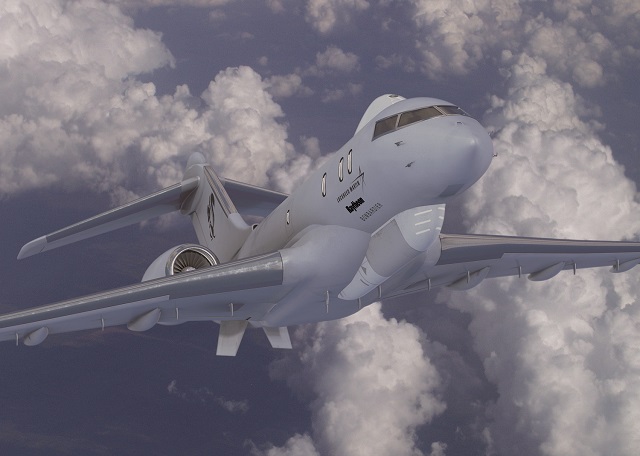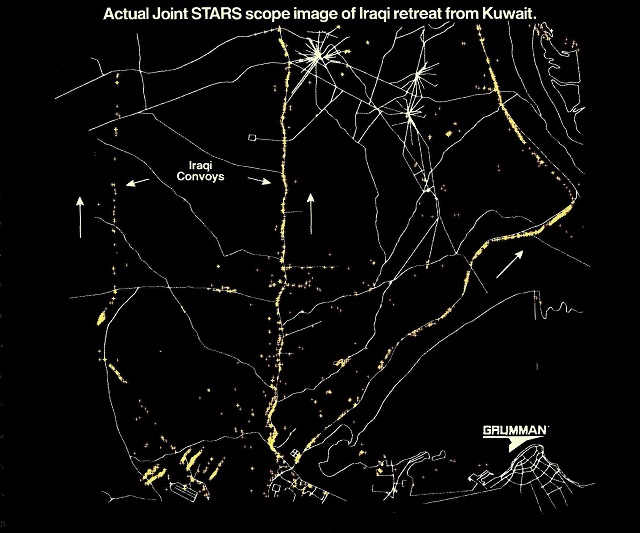Northrop Grumman and Raytheon are at two different places in the race to replace the US Air Force’s radar-carrying Northrop E-8C “JSTARS,” but the two companies say their competing radar solutions will be ready in time to meet the initial fielding date in 2022 or 2023.
The air force issued a request for information this month seeking information from radar makers on where each stands in the race, and where it should focus its research and development money to ensure each radar is sufficiently mature to meet the radar integration time line.
This week, Northrop broke its silence over its radar offering in a 1200-word email to Flightglobal, saying the “art of the possible” is for a sophisticated Northrop radar ready for service by 2022.
The company stopped short of naming its radar offering and provided no concrete details about its capability. However, it’s clear from the email that it will be a scalable active electronically scanned array antenna that can detect anything from tanks and convoys to slow-moving human targets from great distances (dismount moving target indication). It will be capable of performing radar and non-radar functions from the same aperture, including electronic warfare, signals intelligence, communications and can cause “non-kinetic effects”.
The radar will be technological leaps ahead of today’s E-8C Joint Surveillance and Target Attack Radar System (JSTARS) APY-7 passive electronically scanned array. This is mostly driven by rapid advances in commercial computer processing technology and target classification algorithms.
Whatever Northrop’s offering, though, Raytheon believes its “Skynet” radar is already in first place.
The company’s vice president of intelligence, surveillance and reconnaissance Jerry Powlen says the JSTARS opportunity has fortuitously aligned with the Navy’s development of the highly-classified Advanced Airborne Sensor (AAS).
The radar entered flight testing in May on the Navy’s Boeing P-8 Poseidon maritime patrol aircraft. It is a derivative of the Littoral Surveillance Radar System for the P-3C Orion and other in-service Raytheon devices.

Lockheed Martin's Bombardier Global-series JSTARS offering.
Lockheed Martin
“The air force wants to buy state-of-the-art technology. They want something new. They’re in this unique position where the navy has completed an extremely large development programme into flight test,” says Powlen. “It’ll be going into production at about the same time the air force wants it.
“AAS is a culmination of all of those things – MP-RTIP, EISS, LSRS, APS-137. There’s bits and pieces of all of those programmes that culminate into a programme like AAS. It’s one thing to pick up a vehicle moving at 20 to 30 miles per hour, but can you differentiate a person walking? It’s resolution, range and accuracy.”
Raytheon is not exclusively teamed in the competition, and the air force wants to keep it that way.
The company has been approached by all sides for exclusive partnerships, but Powlen says any partnership could give one side an unfair advantage. Powlen says Skynet is scalable to suit all platforms currently in the race: the Boeing 737-700, Gulfstream 550 or 650, and Bombardier Global series.
Of note, if you’re trying to derive some deep meaning from Raytheon’s “Skynet” radar tag, don’t bother. It’s an in-house name that’s a nod to the Terminator movie franchise.

The E-8A JSTARS view of the Iraqi retreat from Kuwait at the conclusion of Operation Desert Storm.
Northrop Grumman
Source: FlightGlobal.com























